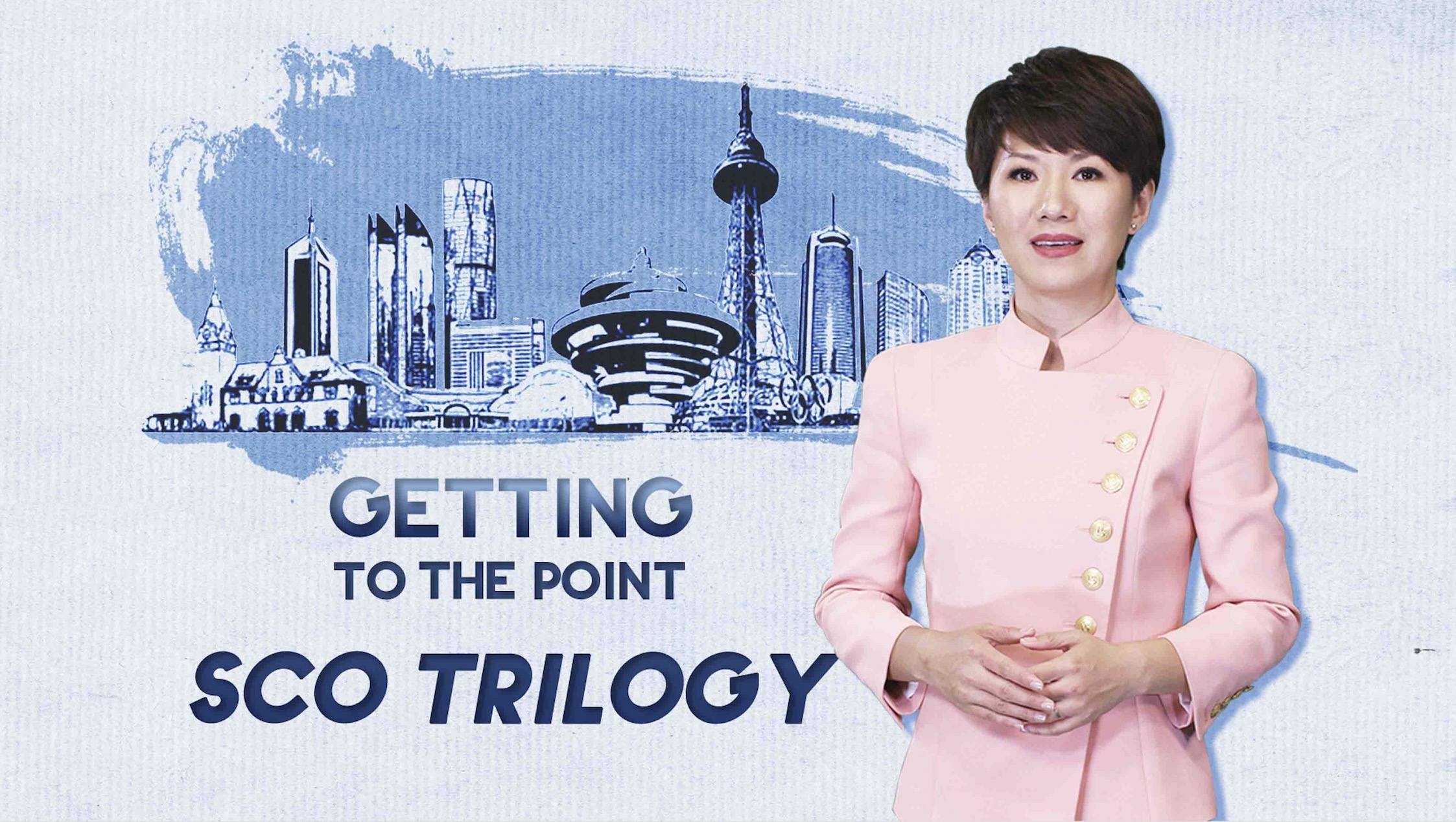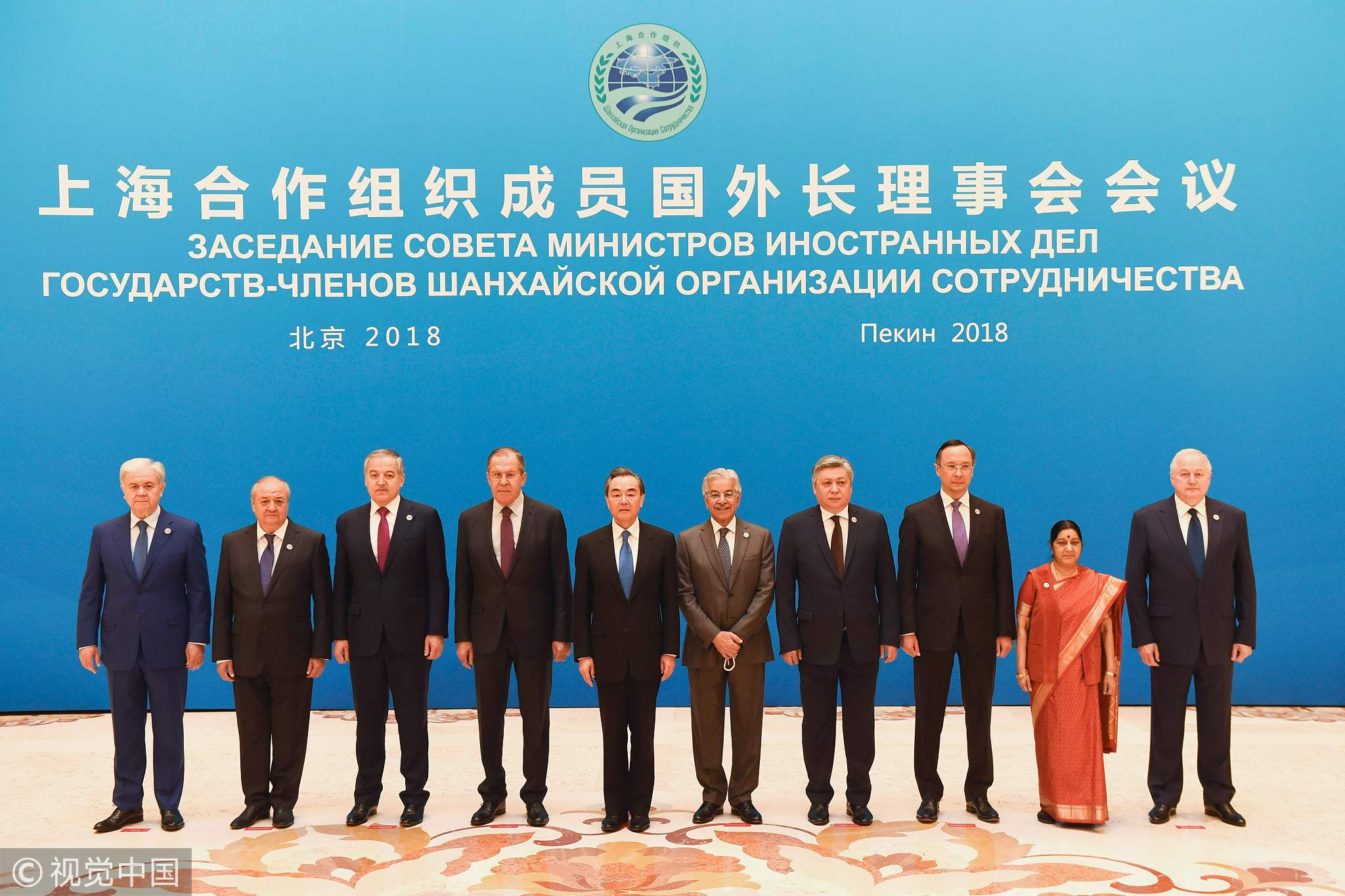
Opinions
07:48, 08-Jun-2018
SCO Trilogy: Is SCO’s expansion part of larger geopolitical ambitions?
By Liu Xin
03:52

The Shanghai Cooperation Organisation (SCO) was established on the basis of the Shanghai Five in 2001. The group remained the same size for 16 years until India and Pakistan were admitted in 2017.
The addition of the two South Asian countries to the Central Asia-dominated group almost doubled SCO members’ total population to 3.1 billion. Does this expansion reflect larger geopolitical ambitions?
The answer is a resounding "No". But why did the SCO accept India and Pakistan?
First of all, SCO’s starting objective is to fight the so-called three evils: terrorism, separatism, and extremism.

September 19, 2016: A Kyrgyz soldier looks through binoculars during Peace Mission-2016 joint military exercises of the SCO in the Edelweiss training area in Balykchy some 200 km from Bishkek. /VCG Photo
September 19, 2016: A Kyrgyz soldier looks through binoculars during Peace Mission-2016 joint military exercises of the SCO in the Edelweiss training area in Balykchy some 200 km from Bishkek. /VCG Photo
The supranational nature of these evils means greater collaboration is needed beyond the confines of the SCO. Take the example of Afghanistan. Porous borders with Southern neighbors such as Pakistan mean the fight cannot be a one-sided affair.
Secondly, we have to understand the SCO is not just about border security and political cooperation. All its members are developing economies, which makes development a natural common goal. Increasingly, these countries want to step up their economic collaboration and integration with the outside world.
India and Pakistan joining the SCO opened up a sea route to the Indian Ocean. Landlocked Central Asian countries, such as Kazakhstan, Kyrgyzstan, Tajikistan and Uzbekistan, now see new venues for international economic interactions.

January 21, 2016: Oil tanks of Oil&Gas-Processing Plant operated by a subsidiary of the KazMunayGas Exploration Production JSC in Kyzylorda region, south Kazakhstan. /VCG Photo
January 21, 2016: Oil tanks of Oil&Gas-Processing Plant operated by a subsidiary of the KazMunayGas Exploration Production JSC in Kyzylorda region, south Kazakhstan. /VCG Photo
The energy cooperation between Central and South Asian countries also highlights the need for strong relations between the two regions.
Thirdly, as I mentioned in the last episode, the Indian and Pakistani governments have yet to see eye to eye. When two members have an uneasy relationship, how could the group mobilize to seek greater geopolitical ambitions?
In fact, just like their fellow SCO members, both India and Pakistan are developing countries in dire need of a stable environment for domestic development. The SCO can help create the necessary conditions for achieving that common goal.

A group photo of foreign ministers and officials from the SCO member states before a meeting at Diaoyutai State Guesthouse in Beijing, April 24, 2018. /VCG Photo.
A group photo of foreign ministers and officials from the SCO member states before a meeting at Diaoyutai State Guesthouse in Beijing, April 24, 2018. /VCG Photo.
The expansion of the SCO proved that the group is vital and attractive. More members of the international community are joining the group in different capacities as they increasingly look East and act East.
As it continues to grow, members, especially China, have maintained that it does not want to follow the old route of military or geopolitical confrontation. The areas covered by the SCO overlap with the Belt and Road Initiative, or BRI. Not only that, the SCO and the BRI also share the common goal of promoting development and cooperation.
We are different, but we should still be able to live together in peace. This is the belief of the SCO. Any country that wants to make an enemy out of an enemy here will find themselves at a loss.
That’s the end of my three-part series on the SCO. I’m Liu Xin. Follow me on Facebook or Twitter using the handle @thepointwithlx. Thanks for watching.

SITEMAP
Copyright © 2018 CGTN. Beijing ICP prepared NO.16065310-3
Copyright © 2018 CGTN. Beijing ICP prepared NO.16065310-3